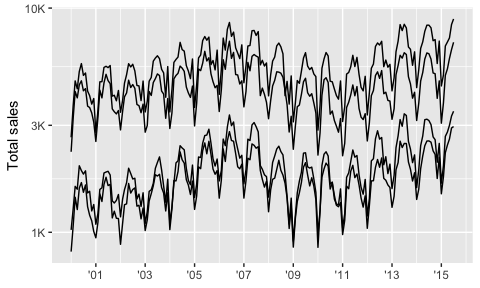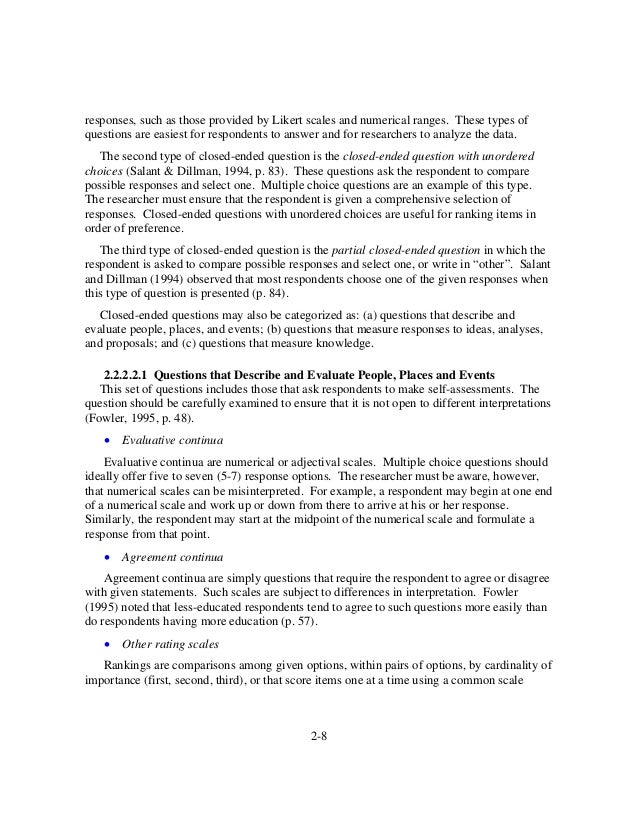42 response scales how many points and what labels
Likert Scale Response Anchors - Sawtooth Software Below are some popular Likert-type scales that you can use in your Sawtooth Software CiW (general interviewing) questionnaires. Level of Acceptability Totally unacceptable Unacceptable Slightly unacceptable Neutral Slightly acceptable Acceptable Perfectly Acceptable Level of Appropriateness Absolutely inappropriate Inappropriate › blog › three-tips-forYour Guide to Rating Scale Questions in 2022 - Qualtrics Jan 15, 2021 · In practice, this means the response options for a satisfaction question your Likert scale labels should look like this: If you’re dealing with an idea or construct that ranges from zero to positive – think effectiveness – (these are known as unipolar constructs) then you’ll go with a 1-5 point scale.
Rating Scales in UX Research: Likert or Semantic Differential? 07.06.2020 · Likert items: Typically, 5, but the number can be as many as 7 or 9. Semantic Differential: Typically, 7, but the number of points can vary: Labels for scale points: Likert items: Each option is labeled with words. (If more levels are included, the continuum might not be fully labeled, as it’s difficult to summarize the extent of agreement ...

Response scales how many points and what labels
Color, Labels, and Interpretive Heuristics for Response Scales These items asked respondents to rate how successful, happy, overweight, nervous, fit, and moody they were on seven-point scales, with the endpoints labeled "Not at all _______" and "Very ________" (for example, "Not at all successful" and "Very successful"). The first item had been used by Schwarz and his colleagues (Schwarz et al., 1991 ). A classification of response scale characteristics that ... In total, they considered more than 280 possible choices, among which 40 choices are related to the design of the scale and belong to 17 characteristics. Table 2 in Appendix provides the list of response scales' characteristics and the choices considered by these authors. Survey Response Scales: How to Choose the Right One | CXL Survey response scales can be embedded in the survey (e.g., 1-5, 1-10, etc.), chosen via a drop-down menu, or included as part of the survey language. No matter how you choose to display the scale, the default ranges affect the precision of your data. For example, if a survey asks your age, a default range of 20-25 instead of 20-30 has ...
Response scales how many points and what labels. Sample Likert Scales // Division of Student Affairs ... Likert-Type Scale Response Anchors. Citation: Vagias, Wade M. (2006). Likert-type scale response anchors. Clemson International Institute for Tourism & Research Development, Department of Parks, Recreation and Tourism Management. Clemson University. Yes, there is a right and wrong way to number rating scales Bipolar scales require seven scale points, three around each side of the midpoint-again a midpoint that truly means neutral, neither, or both. If we go back to our school principal example, she would ask if the school day was: Much too long, Somewhat too long, A little too long, About right, A little too short, Somewhat too short, Much too short. What is a Likert Scale? Definition, Examples, and Usage In a Likert scale, a person selects one option among several that reflects how much they agree with a statement. The scale generally consists of five or seven balanced responses that people can choose from, with a neutral midpoint. However, there can be as few as two responses (with no neutral response) or as many as ten. Likert Scale: Whats, Whys, Hows & Everything to know in 2022 5-point Likert scale; 7-point Likert scale; a) 5-point Likert Scale. A 5-point Likert Scale offers five different options for the respondents to choose from. The options include two extremes, two intermediate, and one neutral opinion. This scale can be used for measuring agreement, likelihood, frequency, importance, quality, and a lot more.
The influence of labels associated with anchor points of ... The influence of labels associated with anchor points of Likert-type response scales in survey questionnaires J Appl Meas . 2011;12(4):370-86. ... research has accumulated which demonstrates that verbal and numeric labels associated with item's response categories in such questionnaire may influence substantially the way in which respondents ... Your Guide to Rating Scale Questions in 2022 - Qualtrics 15.01.2021 · Interval scales - These scales have answer sets where each interval within it tells you about a deeper meaning, rather than just an ordered grouping. It provides quantitative data. For example, 1-5 is an ordered list of numbers that occur one after the other. 1 represents a value (e.g. ‘Least likely’) at one end of the spectrum, while 5 represents a different value (‘Most … 5 Point Likert Scale Analysis, Interpretation and Examples The 5-point Likert scale contains 5 response options that will consist of two extreme sides and a neutral option linked to the middle answer options. Examples of a 5-point rating scale for measuring satisfaction are: Very Satisfied, Satisfied, Neutral, Dissatisfied, and Very Dissatisfied. Hedonic Scales - an overview | ScienceDirect Topics Many scales we have encountered tend to be associated with particular product categories or with a specific company. For example, meat product evaluation usually relied on an 8-point scale measuring product desirability or an 8- or 10-point product quality scale (excellent to poor); other products also made use of such scales (and continue to be used). Some companies have …
Survey Rating Scales to Guide Survey Respondents Effectively Five point scales are most popular followed by seven point scales. These scale ranges tend to work best. Beyond a 7 point scale participants have trouble responding the same way if they repeated the survey, so we recommend staying away from anything above 7 points. Here is an example of a 5 point Likert Rating Scale: Strongly disagree Disagee User Experience Rating Scales with 7, 11, or 101 Points ... To ease comparison, all 7- and 11-point data were converted to a 0-100 (101-point) scale. For 11-point items, the conversion was to simply multiply scores by 10. For 7-point items, the conversion was to subtract 1 from the score, then multiply by 100/6 (which, for example, converts a 1 to 0 and a 7 to 100). A Search for the optimum feedback scale Thus when defining an optimum response scale it is important to consider scales which are frequently used. The Mayflower organisation 2, which regularly implements surveys, has recommended four five-point scales found to be especially effective: 1) Far too much, too much, about right, too little, far too little. 4 Measurement Scales Every Researcher Should Remember ... A Likert scaletypically contains an odd number of options, usually 5 to 7. One end is labeled as the most positive end while the other one is labeled as the most positive one with the label of 'neutral' in the middle of the scale. The phrases 'purely negative' and 'mostly negative' could also have been 'extremely disagree' and 'slightly disagree'.
The 4,5, and 7 Point Likert Scale + [Questionnaire Examples] 3 Point Likert scale is a scale that offers agree and disagree as to the polar points along with a neutral option. Like the 2-point scale, the 3 point scale is also used to measure Agreement. Options will include: Agree, Disagree, and Neutral. 6 Points Likert Scale A 6 point Likert scale forces choice and gives better data.
Can I use parametric analyses for my Likert scales? A brief reading guide to the evidence-based ...
› polopoly_fs › 1LIKERT ITEMS AND SCALES - University of Sheffield point version, is to confine verbal labels to the extreme points on the response scale. The points between ‘Strongly agree’ and ‘Strongly disagree’ are simply given numerical labels. The problem with this simple strategy is that the evidence from studies of survey response is unequivocal:bellingfull la enables respondents to deliver ...
Global Rating of Change Scales: A Review of Strengths and … Variations may be found in the type of question asked, how many points are on the scale, and the labels assigned to the scale points. Also notable is the fact that the scales are often described in insufficient detail for readers to reproduce them. This variability may lead to confusion as to how the scale should be best used as well as difficulty in making comparisons between …
edtechbooks.org › designing_surveys › response_scaleResponse Options - Designing Surveys for Evaluations and Research Option specificity (the number of response options in the scale) is an issue for both multiple-choice and Likert-type response scales. For multiple-choice response scales, the options need to be mutually exclusive and distinct. For Likert-type response scales, the labels used to identify each option on the scale need to be ordinal in nature and ...
Response Options - Designing Surveys for Evaluations and Research In addition to not being needed, having too many options (e.g., more than eight) makes it difficult to give meaningful labels to each response (i.e., labels that makes them distinct and clearly ordinal in nature). Respondents most likely won't be able to make meaningful differentiations between points on the scale, and less granularity would likely serve the research purposes.
20 Free Ready-Made Survey Rating Scale Examples | On a ... Four or six-point scales make your respondent choose between "for" and "against." You would love to have objective data, after all. How strongly do you agree or disagree with the statements? Strongly Disagree Disagree Neither Agree nor Disagree Agree Strongly Agree Person A is a highly-qualified specialist Person A is an efficient project manager 5
Continuous Color Scales and Color Bars in Python - Plotly Explicitly setting a Color Range¶. When using the range of the input data as the color range is inappropriate, for example when producing many figures which must have comparable color ranges, or to clip the color range to account for outliers, the Plotly Express range_color argument can be used. Here we clip the top of the color range above the lower range of the data and …
PDF Response scales - UIC half of respondents were randomly assigned to rate from 0 to 10 with endpoints labeled "not at all successful" and "extremely successful" half of respondents were randomly assigned to rate from -5 to +5 with endpoints labeled "not at all successful" and "extremely successful" only 9% of respondents rated their success either a "9" or a "10" on …
EXPLORING OPTIMAL RESPONSE LABELS FOR CONSTRUCTING AN by Appropriate Response Scale Design for Intended Data Likert scale formats are often used in closed-ended survey questions. Likert (1932) developed the 5-point descriptive response scale to measure an individual's perceptions or opinions on a topic. The Likert scale presents response options in a bipolar
› articles › rating-scalesRating Scales in UX Research: Likert or Semantic Differential? Jun 07, 2020 · Likert items: Typically, 5, but the number can be as many as 7 or 9. Semantic Differential: Typically, 7, but the number of points can vary: Labels for scale points: Likert items: Each option is labeled with words. (If more levels are included, the continuum might not be fully labeled, as it’s difficult to summarize the extent of agreement ...
measuringu.com › scale-pointsShould You Use 5 Or 7 Point Scales? – MeasuringU Aug 25, 2010 · The SUS has 10 questions meaning it has 50 points of discrimination. In fact the standardized SUMI questionnaire has only 3 point scales but it has 50 questions for a total of 150 points of discrimination. 3. Don’t Change Your Scales! If you or your company has been using questionnaires with 5 points scales don’t change them.
Assessment Scales for Sexual Disorders—A Review 10.07.2020 · Many of these rating scales are self-report questionnaires, which often help the patient is expressing themselves better, as many times people are shy about discussing their aspects during an interview situation. In terms of research, rating scales are at the core of any kind of quantitative study in psychiatry and are often considered as an equivalent of any kind of …
How to Label Your 10-Point Scale - Versta Research Common response scales used in a wide variety of surveys are significantly related to the amount of item non-response. Specifically, we found that 1-10 response scales produced much higher levels of missing data than 0-10 scales and that 0-10 scales with 5 anchored as a midpoint consistently had the smallest amount of data missing.

Can I use parametric analyses for my Likert scales? A brief reading guide to the evidence-based ...
Survey Response Scales - Answer Format and Types of Questions Three-point, five-point, and seven-point scales are all included in the umbrella term "rating scale". A rating scale provides more than two options, in which the respondent can answer in neutrality over a question being asked. Examples: 1. Three-point Scales Good - Fair - Poor Agree - Undecided - Disagree Extremely- Moderately - Not at all
A classification of response scale characteristics that ... In total, they considered more than 280 possible choices, among which 40 choices are related to the design of the scale and belong to 17 characteristics. Table 2 in Appendix provides the list of response scales' characteristics and the choices considered by these authors.









Post a Comment for "42 response scales how many points and what labels"